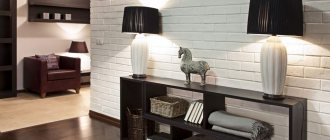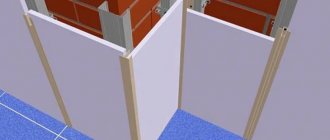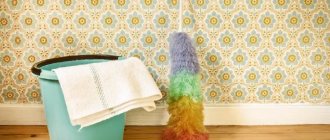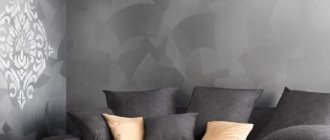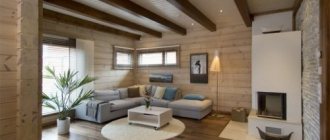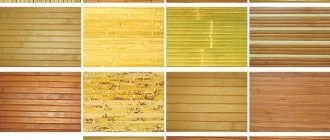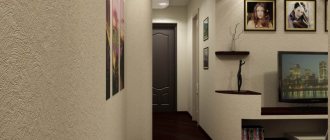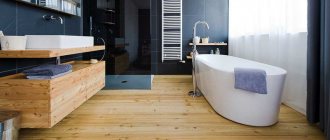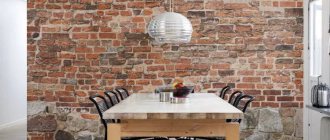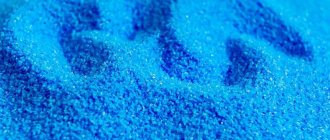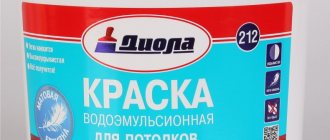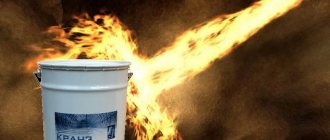One of the most pressing questions that arises in the process of renovation work is how best to make ceilings in an apartment? If you are in a hurry to move into a new home and do not have enough money to purchase expensive materials, you can simply refresh the ceiling with whitewash. A stretch ceiling is not cheap, but after its installation the interior of the room will be transformed beyond recognition.
You can also use PVC panels, plasterboard, wallpaper and other materials to finish the ceiling. What features they differ in and which material is better to choose in each specific case, we will consider below.
Whitewash and variations
Let's start with the old and proven method - whitewashing. But even here a surprise awaits you. There are more than one types of whitewashing technologies.
Classic whitewash
The standard white ceiling was in all Soviet apartments, schools, hospitals, etc. So the chances that you don't know what he looks like are 0%. But despite the fact that classic whitewash was previously used everywhere, today it is no longer on the TOP list of clients.
Among the disadvantages of this finishing method:
- a perfectly flat “base” is required;
- the process itself is easily soiled;
- removing the previous layer of whitewash for updating is problematic.
If you do not take into account the fact that to whitewash the ceiling you will have to invest in professional plaster and ceiling putty, the finishing option is considered inexpensive. No special skills are needed here; even a non-professional can handle whitewashing. It is enough to mix the mixture and walk across the ceiling with a brush or roller.
Another advantage of classic whitewashing is versatility. You can whitewash the ceiling if it is made of wood, concrete, brick, etc. In addition, this option will fit into any interior.
Painting
The essence of painting is not much different from whitewashing. The difference is that special paints and varnishes are used. This is water-based or water-dispersion paint.
The disadvantages are the same as in the previous finishing method:
- a perfectly flat “base” is required;
- soiled method;
- problems may arise with removing the old layer;
- You need to update the color every 2-3 years.
It is worth noting that painting is not done in winter, since most products have a persistent specific odor that takes a long time to dissipate.
In everyday life, painted ceilings do not cause problems. You can do everything yourself. The paint can be chosen in any color and type (matte, glossy). Ceilings painted with special water-dispersion paint can even be washed.
Decorative plasterer
With classic whitewashing, the ceiling is plastered to a perfectly smooth surface. However, this is not necessary. You can make the pattern on the ceiling in relief. This can be achieved in 2 ways:
- use special heterogeneous compositions for plaster (with marble chips, etc.);
- at the final stage, create a pattern on the unhardened plaster using curly spatulas.
In any case, decorative plaster is not the final finishing touch. It is necessary to paint or whitewash the ceiling, but this is not easy to do on your own, since you have to use sprayers and paint in several layers to avoid uneven distribution of paint.
The advantages of decorative plaster include:
- possibility of decoration on ceilings made of any materials;
- the relief helps to hide minor imperfections in the ceiling;
- interesting design solution.
But the already considerable cost of plastering work will become even greater. And you can’t do it without the help of a professional.
Sgraffito
This finishing method is ancient, but few have heard of it. The essence of sgraffito is scratching a design onto a surface using several layers of whitewash or paint of different colors.
Here's how it works. A drawing diagram is created, which will later be transferred to the ceiling. The first layer of paint of the same color is applied. It's drying up. The second one is applied. Then, in accordance with the scheme, the paint is scratched out so that the color of the original layer is visible.
You can apply another layer of color, remove the paint from the existing pattern lines and scratch them in a new place to create a 3-color pattern. You can repeat several times. At the end it should be covered with wax.
Thanks to the wax film, sgraffito is easy to care for. But the finishing is not suitable for every home. It is used in houses with multi-level ceilings or for decorating only one part. For example, around a chandelier.
The cost of the work is high, since it is difficult to find a qualified craftsman. But the result is amazing.
Venetian plaster
It is impossible to make a ceiling out of marble. This is too heavy material. However, there is an alternative - Venetian plaster. Using special mixtures of different materials, a surface imitating natural stone is obtained.
At the final stage, everything is coated with epoxy resin to obtain a dense mirror layer to obtain a “shine” of the stone when illuminated.
The disadvantages of the method include:
- high cost of work;
- high cost of materials;
- complexity of finishing;
- Not suitable for any room design.
However, it is not only the cost of the work that explains the elite nature of this type of finishing. This ceiling will last a long time. It is hypoallergenic, not susceptible to fading, fungus formation, etc.
Lime or water-based paint, which is better?
- 1 7 tips on how to whitewash the ceiling and walls with lime, chalk, water-based paint
- 2 Whitewash the ceiling with your own hands: chalk, lime, water-based paint (video)
- 3 Whitewash the ceiling with your own hands
- 4 Water-based paint for whitewashing: preliminary work
Today, the shelves of hardware stores are bursting with a variety of finishing materials. Wallpaper of different types, decorative plaster, stone, tiles - choose what you want, but with all this, the good old whitewash does not lose popularity . Among the main reasons are low cost, ease of application and environmental friendliness. These qualities are sometimes enough to turn a blind eye to the low durability of the coating. Let's figure out how to whitewash the ceiling and walls with lime and chalk, decide whether water-based paint is a whitewash, and which material performs better.
No. 1. Benefits of whitewashing
Whitewashing ceilings and walls is not the most modern way of finishing, and far from the most fashionable. What makes thousands and tens of thousands of people across the country still whitewash in the old fashioned way? Whitewashing has enough advantages:
- low price is the main argument in favor of this type of finishing. When the budget is limited and the room needs to be tidied up, the choice falls on whitewashing. For this reason, hospitals, schools and other government institutions still actively use gypsum and chalk to decorate ceilings and walls;
- ease of application. A person without special training can handle whitewashing - no special skills, abilities or tools are needed;
- neat appearance . Of course, in terms of intricacy and decorativeness, a whitewashed ceiling is inferior to a tension system, and whitewashed walls are inferior to those finished with Venetian plaster, but if you apply whitewash correctly, you can end up with a fresh white surface with an even matte color. If desired, dye can be added to the whitewash solution;
- harmlessness, environmental friendliness , ability to pass moisture and air. Conventional whitewashing in this regard is far ahead of vinyl wallpaper and polystyrene foam ceiling tiles, so in some cases it will be even more preferable;
- Lime whitewash has bactericidal properties , so it will provide additional protection against mold and mildew.
Among the disadvantages are low durability (1-3 years), uncomplicated appearance and dirt during application.
No. 2. What to whiten with: lime, chalk or water-based paint?
When people talk about whitewashing, they most often mean lime whitewashing . Lime (calcium oxide) is slaked with water to obtain a material that is used for finishing.
The main advantages of lime whitewash:
- bactericidal properties of the material, which is why this finish is used in kindergartens, schools, medical institutions, even in wet rooms. The antiseptic qualities of lime also make it possible to actively use it in arranging cellars and chicken coops. For the same reason, tree bark is treated with lime whitewash;
- if the lime mortar was prepared and applied correctly, the coating will last about 3 years or even more;
- resistance to temperature changes and high humidity. That is why bathrooms can be finished with lime if other materials are not affordable;
- excellent adhesion to almost all materials, including brick, wood, plaster and concrete;
- ability to fill small cracks;
- low price, which is typical for any whitewash.
With all its advantages, lime also has disadvantages . The main one is the possibility of getting burned, so all work must be carried out with gloves. Chalk is much safer in this regard. In addition, there is a possibility of leaving stains and stains. Allergy sufferers are not recommended to use this finish.
Chalk , like lime, is inexpensive and environmentally friendly, and among its additional advantages :
- safety at work;
- a deeper white color, which many people like better than the color obtained with lime whitewash;
- Possibility of use in rooms where allergy sufferers live.
Chalk, when interacting with water, is capable of accumulating it, which leads to the appearance of cracks on the surface and rapid peeling of the whitewash layer, so chalk whitewash is taboo in bathrooms, kitchens and other wet rooms. If the application technology is violated, you can get not only stains and stains, but also bubbles. In addition, chalk whitewash gets dirty.
There is such a thing among people as whitewashing with water-based paint . This finish has nothing to do with whitewashing and refers to painting.
It began to be classified as whitewashing, apparently, due to the composition of the materials used - these are paints based on cement and lime .
Today, painting with mineral water-based paints can be considered the best alternative to whitewashing. Among the main advantages of this option:
- resistance to abrasion, temperature changes;
- bactericidal properties;
- ability to breathe;
- safety for humans;
- ease of use, high drying speed.
However, the durability of such a coating is also not great, but the price is significantly higher than that of conventional whitewash.
No. 3. How to determine what was used for whitewashing?
Probably everyone has heard at least once in their life that different whitewashes cannot be mixed. If lime whitewash was applied to the ceiling or wall, then when installing chalk whitewash on top, you will soon be able to see unsightly stains. When preparing a room for finishing and assessing the condition of surfaces, it is very important to determine what whitewashing was done before.
The check is very simple. It is enough to wet a small fragment of the finish with water and observe the reaction. Wet lime will darken a little, and if you rub the surface with your finger, there will be no white marks left on your hands.
No. 4. How to wash off whitewash and prepare the surface?
Before whitewashing a ceiling or wall, it is necessary to prepare the room and surface for future work. The sequence of actions is as follows:
- If possible, remove all pieces of furniture and decor from the room. Anything that could not be taken out can be covered with plastic wrap and secured with masking tape;
- It will be easier to remove old whitewash It is better to wet the surface in parts so that the moisture does not have time to dry out. Some advise adding a little citric acid or vinegar to warm water, others use a weak soap solution. You can moisten the surface with a sponge or brush. It is enough to simply remove the soaked whitewash with a spatula. It is better to try to dump the fragments that fall off into a separate container, minimizing their contact with the floor. Residues are washed off with a damp sponge. Chalk whitewash is much easier to remove;
- If there are visible stains , the surface must be tidied up. Rust stains are washed with water and then treated with a solution of copper sulfate (the solution is prepared by adding 50-100 g of copper sulfate to 1 liter of hot water). Grease stains can be removed with a weak solution of soda ash: a rag is moistened in a 2% solution and applied to the contaminated surface until the stain completely disappears. Then the treated area is thoroughly washed with water. Treatment with a solution of hydrochloric acid with a concentration of 2-3% can help remove soot;
- application of an antifungal composition;
- if there are noticeable cracks and dents , then it is better to get rid of them. If the depth of the unevenness is within 1 cm, then you can use putty to level it; if there are cracks up to 3-5 cm, then it is better to use plaster. The putty can be found ready-made, or in dry form; it will need to be mixed with the amount of water indicated on the package. Apply the mixture with a spatula and level it with it. If there are large vertical deviations, you can use the construction rule. Many experts consider it illogical to apply expensive store-bought putty under cheap whitewash, so they prepare the composition themselves . The simplest recipe: mix plaster, chalk and wood glue solution in a ratio of 1:2:2. A glue solution is prepared by adding 30-50 g of glue to 1 liter of water;
- after the putty has dried, it must be sanded with sandpaper to obtain an even, smooth surface;
- applying primer. In principle, you can take any ready-made composition, or you can prepare the primer yourself . One of the simplest and most suitable recipes: dissolve 50-100 g of drying oil and 200 g of laundry soap, cut into thin shavings, in 3 liters of hot water, dilute 3 kg of slaked lime separately in 4 liters of water, then mix the two solutions and dilute with water to a volume of 10 -11 l;
- After the primer has dried, you can proceed to whitewashing. It takes about a day to dry.
Wallpaper
Pasting the ceiling is a simple and cheap method. For this, special ceiling wallpaper is used. They are denser than wall ones, so they react well to different types of glue.
Other advantages include:
- there is no need for a perfectly flat surface, although rough plaster is still needed;
- you can choose wallpaper of different colors, including textured ones;
- You can cover the ceiling yourself.
There are different types of wallpaper from paper to liquid. Some of the options can be wiped with a damp cloth for cleaning, so maintenance is not difficult.
The main disadvantages include the fragility of the material. But if the neighbors flood, you can only re-glue the damaged part.
How to paint the ceiling yourself?
Painting the ceiling begins with its preparation. First of all, you need to get rid of the previous coating, which has served you faithfully for many years. After this, it is necessary to inspect the ceiling for cracks, irregularities and other damage. If irregularities and cracks are present in small quantities, they can be eliminated using putty. After application, the putty layer needs to dry, and then you need to go over it thoroughly with sandpaper to clean it. After finishing cleaning, apply primer with a roller. This will complete the preparatory stage of the ceiling.
Ceiling primer.
The painting process itself is quite simple. You need to pour a small amount of paint into a special tray and apply it to the ceiling using a roller. It is best to use a short nap roller for this task. It is better to avoid foam rubber products. Air bubbles in the foam can leave unsightly stains on the ceiling. It is correct to apply the paint not in one, but in two layers. Therefore, after waiting until the ceiling dries, repeat all your efforts.
Rest assured, you will definitely succeed! You can wonderfully transform your bathroom, either by painting it or simply whitewashing it.
Tile
Without reservations, foam tiles are the most budget-friendly finishing option.
In addition to the price, the advantages include:
- there is no need for a perfectly flat “base”;
- the tiles adhere to the glue, so you can do the work yourself;
- large selection of colors and textures;
- There are no difficulties with maintenance, just wipe with a damp cloth;
- if necessary, you can easily replace several tiles without dismantling the entire ceiling;
- long service life.
Among the shortcomings, it is worth highlighting only the non-ecological nature of the material. In addition, the ceiling will be fragmented into squares, which does not always look appropriate.
Types of materials used for whitewashing
The choice of one type or another depends on what the ceiling was originally covered with.
If lime whitewash was used, then there will be no mark left on the finger, but after chalk whitewash, it will be obvious.
To prevent stains and streaks from forming on the ceiling, you must remember that you cannot apply chalk over a lime coating.
Chalk whitewash for ceiling
It has the best resistance to moisture. The ceiling surface, whitewashed with chalk, has a good deep color. This type of finishing is completely hypoallergenic and absolutely harmless to health.
Lime whitewash
Its main advantage is the tightening of cracks and crevices, masking small defects of the ceiling surface. The use of a finishing material such as lime may be prohibited if a person is allergic to it. The drying speed of this whitewash is longer than that of chalk whitewash. Provided that lime is sufficiently moisture resistant, then this option is best considered when finishing a bathroom.
Stretch ceiling
The advantages of suspended and suspended ceilings are the same. The difference is in technology. Drywall is a dense material that is cut to the shape of fragments and attached to metal slats. Stretch ceilings are made from lightweight materials from PVC film to fabric.
In addition, it is possible to create a seamless ceiling of any color and design, including multi-level schemes.
Today this option is the most popular. Indeed, among the advantages is protection against leakage. So, if the neighbors flood, the water will collect in the film. Then you can pierce it and decorate the hole. Such services are provided by companies that provide installation.
The process of preparing a whitewash solution
When choosing what to whitewash the ceiling with, it is worth remembering that diluting water-based paint will not cause any particular difficulties. This cannot be said about chalk and lime mortars.
The solution is prepared at the rate of: 1 sq. m of ceiling surface to be coated - 0.5 liters of mixture. Component compositions are designed for 10 square meters. m. It is better to mix such solutions with a construction mixer; they are stored for about 36 hours.
Chalk solution
Take 30 - 100 ml of glue (carpentry, PVA), 50 g of grated laundry soap, 3 kg of chalk sifted through a sieve, about 20 g of blue to enhance the whiteness.
Initially, you need to dissolve the glue and soap shavings in water. Then, without ceasing to stir this mixture, you need to add chalk combined with blue.
Mortar
This whitewashing of the ceiling is somewhat simpler to prepare. 175 g of lime (mashed), 45 g of blue lime, and 10 g of table salt are diluted in warm water. In this case, a snow-white ceiling covering will not work, but its defects and unevenness will be hidden.
In both the first and second cases, 1 kg of chalk (lime) is dissolved in 2 liters of warm water. The optimal consistency of the solution is determined by using a metal knife: if, when it is immersed and pulled out, the solution drains without leaving any traces, then it is not thick enough.
The prepared mixture must be left for 15 minutes and then passed through a sieve.
Wood coverings and varieties
Wooden ceiling coverings are not used very often. However, you should not immediately discard this option. It can fit well into the interior.
Tree
Natural wood for finishing the ceiling gives the room a feeling of warmth. The advantages of this choice:
- the material has good sound and heat insulation properties;
- there is no need for a perfectly smooth surface;
- easy to care for.
Natural wood ceilings are best suited for private homes or lofts with high walls, as this finish visually reduces the height of the room. In addition, wood flooring is difficult to install.
Laminate
Yes, laminate can be laid not only on the floor, but also on the ceiling. It seems strange, but it works when combined well with the overall design. The coating looks aesthetically pleasing and does not require special care.
Among the disadvantages, one can highlight poor moisture resistance. This ceiling is not suitable for a bathroom or kitchen. In addition, if it floods, it will look terrible and you will have to replace the entire ceiling at once.
Cork tiles
For now, cork tiles are considered exotic. Among the advantages of this type of finishing:
- good sound and heat insulation;
- easy to care for;
- moisture resistant;
- fireproof, unlike natural wood.
In addition to tiles, there are options with roll coating, which can reduce the number of joints on the ceiling. However, cork ceilings are expensive.
Bamboo
Another unusual finishing option is bamboo. Moreover, there are several types that are used:
- canvas;
- tile;
- yards or panels.
This option is also expensive, even compared to natural wood. In addition, it is not suitable for every apartment. But it is environmentally friendly, does not require special care and is durable.
Coffered ceilings
Among the types of wooden ceilings, coffered ceilings are the most unusual. Today they are used in restaurants, hotels, museums. The appearance is a huge number of ceiling beams, the space between which (caissons) are recesses that are finished with wooden slabs.
To reduce the cost of this finish, natural wood can be replaced with MDF or even plasterboard.
Advantages and disadvantages of paints
Painting the ceiling is also considered a classic and one of the simplest bathroom finishing options. Of course, nowadays you won’t surprise anyone with a painted ceiling, but if you choose a paint tone in the same palette as the tiles, you can get a pretty impressive result. When choosing paint for your bathroom you need to know that:
- She is not afraid of water. This means that droplets of condensation will be practically harmless to it.
- The paint can be washed. This feature will help you always keep your bathroom clean.
- You can paint the ceiling yourself.
- You can apply paint not only to concrete surfaces, but also to brick and wood.
- The widest palette will allow you to find the right shade that perfectly matches the color of your bathroom.
- The service life of paint is much longer than that of whitewash.
As for the shortcomings, they include:
- Loss of color. After some time, the paint may become cloudy or begin to fade.
- If condensation constantly collects on the ceiling, the paint may begin to warp, peel and fall off.
- Restoring the ceiling will require more time from you. After all, in order to update the color (paint, restore) you will need to get rid of the old layer of paint and level the ceiling.
Many developers give their preference to painting the ceiling in the bathroom. After all, its service life reaches 5–7 years, and this is much longer than whitewash.
Classic painted ceiling.
Siding
Covering the ceiling with siding can be considered a universal finishing method. The slats are most often plastic, but there are even metal ones.
Advantages of siding:
- no need to prepare the ceiling;
- dust-free and fast work;
- moisture and fire resistance;
- hypoallergenic;
- low risk of developing fungus or mold.
You can cover any original covering with siding: wood, concrete, brick. Often used in office premises, bathrooms, etc., as it is a cheap and practical type of finishing.
What might be needed for whitewashing?
In order for the ceiling repair to go off without a hitch, it is necessary to use high-quality materials and tools. The following equipment may be needed during whitewashing:
To whitewash the ceiling you will need different rollers and brushes.
- brushes and rollers (you can also use a spray gun and a vacuum cleaner to apply the coloring material);
- containers for the production of dye batches (for paint you need to use special baths with a ribbed bottom);
- to work at ceiling height, you should use comfortable stepladders or sawhorses, as well as special extension handles for rollers;
- It is imperative to use personal protective equipment, especially eye glasses and gloves;
- You may need film or other material to cover the floor or objects located in the room.
Thus, by choosing between such inexpensive alternatives as lime, chalk or water-based emulsion, having studied all the specific features of their use for whitewashing the ceiling surface and having prepared all the necessary materials and tools, you can quickly and effectively complete the design of the ceiling in a room wearing one or another with your own hands. functional purpose.
Cassette ceiling
In offices, shops, schools and hospitals, cassette ceiling decoration is often found. Initially, a metal grid with wide grooves is installed, into which the cassette plates will be inserted.
The advantages of this finish include:
- no need for a smooth ceiling;
- you can hide communications;
- individual cassettes are easy to change;
- you can install lamps both outside and inside to create soft lighting, since the slabs are made of frosted glass;
- easy to care for.
The disadvantages of the finish are poor sound and heat insulation, so it is used for commercial premises.
Preparation for work
Before removing old whitewash from the walls and ceiling, you need to know what was previously used - chalk or lime. The check will not take much time. It is enough to moisten the surface with water. If lime was used, the wet area will darken. Or just run your finger along the wall. If the surface was whitened with chalk, the finger will turn white. After lime it will not color.
The success of whitewashing is primarily influenced by careful surface preparation. To do this, just follow simple rules:
- empty the room of household appliances and furniture. If it is impossible to do this, you need to cover them with polyethylene film and secure it with tape to prevent it from slipping;
- if you wet a section of the wall in advance, it will be easier to remove the old layer of whitewash;
- to wash off the old layer, it is recommended to use a soap solution, plain clean water with the addition of citric or acetic acid;
- The old whitewash is removed with a spatula and collected in a special container. If this is not done, the cleanliness of the room will be at risk;
- When the old whitewash is removed, the wall is washed with a sponge to remove any residue.
- to remove stains from rust, grease, and soot, copper sulfate, soda ash, and hydrochloric acid are used;
- cracks and dents (depending on the size of the defect) are puttied or plastered;
- After removing the old whitewash and leveling the surface, an antiseptic composition is applied - a primer. You can either make it yourself or purchase it ready-made;
- After the surface has completely dried, we begin whitewashing.
About the types and characteristics of water-based compositions
You can buy different types of water-based emulsion in construction stores and markets. According to their composition, they are: silicone, acrylic, silicate, latex. There are no fundamental differences between them. They differ from each other only in that ceilings painted with certain compounds (for example, latex or acrylic) can be washed. In addition, latex-based paints do a good job of closing small gaps on ceiling surfaces. But the cost of such compositions is very high.
All water-based paints have a number of advantages. They are very practical, easy to apply with your own hands, hypoallergenic and completely safe for health. It is also important that modern water-based emulsion can have almost any color shade. Finally, let’s say that the paints described in the article are divided into glossy, matte and semi-matte. If you are painting a whitewashed surface without washing off the previous finishing layer, do not use a glossy compound. He will not be able to mask all the unevenness of the ceiling. But matte paints are ideal for painting whitewashed substrates.
Source: remoskop.ru
